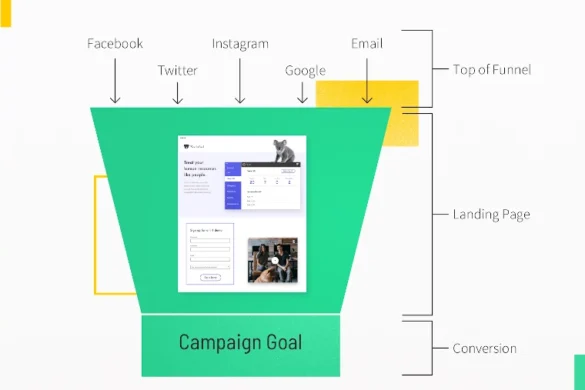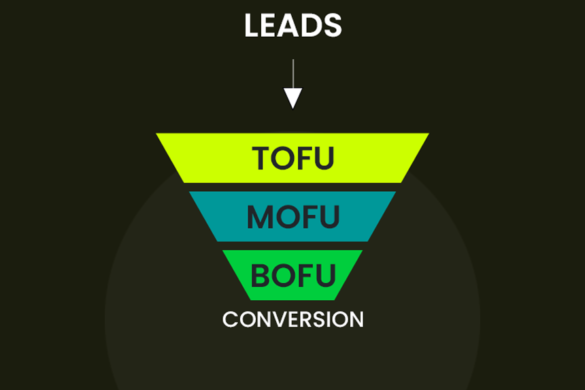Table of Contents
It’s okay, you’re worried. Your website traffic is down, which means your bottom line is suffering. With one straightforward query, company executives are coming to you: “Why is my website traffic going down?” You require a response (and a workaround) quickly.
There are several causes for a decline in website traffic.
This article discusses the four most typical reasons why website traffic declines and offers fixes for each problem. Find out why there is a decline in traffic to your website by reading on. Entering your URL here for an instant SEO audit is a quick way to find out why your organic traffic is declining.
However, if you require assistance right away, call us at +255 783 957 836, and our knowledgeable staff will assist you in locating and resolving the issue!
A new algorithm update launched
An algorithm update is the most frequent cause of decreased website traffic for many businesses.
The Problem
Search engines aren’t just sitting there. Consider Google and Bing. They’re constantly searching for methods to enhance the search experience because more delighted consumers translate into more market share and loyalty.
Because of this, search engines frequently improve their algorithms. That being said, a revised algorithm may affect how highly your website appears in search results. It affects your website’s traffic by raising or lowering your ranking.
It can significantly reduce the traffic to your website if a search engine, such as Google, modifies its algorithm and your website moves from page one to page two for a competitive phase. This is because just 25% of users look at the search results second page.
The solution
Although search engines are always upgrading their algorithms, your business can adjust its web approach to consider these changes. For instance, a cross-channel marketing plan can assist your company in generating website visitors from many sources.
A few examples include:
- Paid ads
- Social media
It’s also worthwhile to look into the algorithm change if it results in a decrease in traffic to your website. Even though search engines like Google don’t usually comment on algorithm updates, industry insiders frequently gather data that demonstrates the updates’ features.
Your team can use this data to audit your website and identify any issues that might need to be fixed to raise your rating.
Your website is HTTP, not HTTPS
Another possible consequence of an insecure website is a notable (and long-lasting) decline in site traffic.
The problem
Because Secure HyperText Transfer Protocol (HTTPS) is so important for online security, the majority of websites implement it. Compared to HyperText Transfer Protocol, HTTPS securely encrypts and transmits user data, including credit card numbers.
Google said back in 2014 that its search engine algorithm will use HTTPS as a minor ranking indication. However, in the years that have passed, cybersecurity has grown increasingly important. For this reason, web browsers such as Google Chrome now notify users when they visit a website that utilizes HTTPS instead of HTTP.

The full-page alert directs users to “Return to Safety” after they have left your website. The user’s browser will indicate that your website is insecure even if they choose to view it.
For this reason, a website that runs on HTTP rather than HTTPS may see a decrease in both website traffic and revenue. A customer won’t feel comfortable enough to make an online transaction if they discover that your website is insecure.
The solution
If your website uses HTTP and you’re wondering why your traffic is dropping, you’re going to require a developer. Your website can be quickly restored to HTTPS by updating it with the help of your development team or a reliable company like WebFX.
Use these steps to get HTTPS for your website:
- Unless you already have one, get your website a dedicated IP address.
- Get a certificate for the Secure Sockets Layer (SSL).
- With your site host, activate your SSL certificate.
- Put the SSL certificate in place for your website.
It may require several days for your SSL certificate to be installed and activated.
Redirecting visitors (as well as search engines) to your secure website is another crucial task for your web construction team. Your user experience and search engine optimization (SEO) strategy may suffer if users and search engines can reach your HTTP site without a redirect.
Your keyword strategy is outdated
A slow, constant, and consistent decline in traffic might also be caused by an outdated keyword approach.
The problem
Businesses that notice a steady decline in website traffic have to review their keyword approach. It’s crucial to examine your content and its search engine ranking, even if you don’t have a keyword plan for SEO.
This is a result of people’s shifting search behaviors.
A free tool called Google Trends illustrates how search and even purchase habits evolve. People used to search for “cellphone” before the release of the iPhone and its ultimate dominance in the smartphone market. But now, the majority of consumers look for “smartphone” online.
You run the danger of losing important website traffic if your business doesn’t adjust to these kinds of developments in your market. This is because search engines and people will not find the material on your website to be relevant or helpful, which could lead to lower rankings in search results.
The solution
The process of updating your keyword strategy takes a lot of effort and resources. Your staff must take the time to optimize and edit content, even for a tiny website. But the investment is well worth it because of the significant return on investment (ROI).
Restore website traffic by implementing the subsequent actions:
- Audit your keyword strategy, looking for outdated or generic keywords
- Research alternative keywords with a higher search volume and overall value
- Revise your content to include these alternative keywords
- In most cases, your company will discover new content topics in your keyword research.
Your company will benefit greatly from this as it strengthens both your SEO and content marketing strategies. Additionally, fresh material can increase website traffic and help your business appear in relevant search results.
Your website’s design forgot about SEO
Your website traffic can suffer greatly from a site design that disregards SEO.
The problem
It’s a great idea to redesign your website, particularly if it’s older. A redesigned website offers a better user experience and appears more contemporary and businesslike, both of which can boost your revenue.
The issue is that a lot of businesses overlook SEO while creating their websites.
This error is made even by web design companies. They are aware of design and how to make a visually appealing and functional website, but they are unaware of the connection between SEO and web design and how a freshly designed or renovated website can drastically reduce traffic.
A few ways a website redesign can hurt your SEO and traffic include:
- Replacing page content, including title tags and meta descriptions, with unoptimized content
- Creating brand-new pages for existing pages, without setting up a 301 redirect
- Changing the site structure, without updating the sitemap
- Redesigning the website without including your Google Analytics tracking code
On the other hand, a poor site design may keep your website from ever receiving the volume of visitors you had hoped for. This is because your website will have difficulty showing up in search results about your sector, goods, or services if SEO is neglected.
It’s imperative to address this issue as soon as possible because your website’s design affects the entire thing.
The solution
Companies can approach a traffic drop following a site redesign in a few ways, including:
- Restore your previous site with backups
- Optimize your website and new content.
- Make a sitemap update.
- Set up 301 redirects
Your remedy can take a long time, depending on your redesign.
For instance, it will take time for your business to rank in search results and receive the same volume of traffic as it did before you decide to resume your SEO plan. While it will likely take several weeks or months for your traffic levels to return, setting up 301 redirects is less labor-intensive.
Your team will need to employ a similar strategy if your initial site design fails to generate visitors. Redirects might not be necessary, but you still need to produce content that is optimized for your website and audience.
Maybe your data is incorrect
This could seem like a strange bit of good news, but make sure to double-check your sources if you notice a significant drop in website traffic. Has someone deleted the tracking for your web analytics from the website? Was there any duplication or modification of the code? Is there a problem with a third-party service you depend on for your data?
Occasionally, what appears to be a sharp decline in traffic is only a missed comma or a mistake in your content management system. For the reasons mentioned above, tracking problems are usually far easier to fix than a real decline in traffic. However, tracking errors are never nice.
Over the years, we have observed numerous websites that exhibit a significant drop in traffic. However, it is often the case that the web developer either removed the Google Analytics code from the website by accident or was viewing the incorrect view in Google Analytics. Check your sources again before becoming overly anxious because these things happen!
7 additional reasons your website traffic is down
You’re still not sure why fewer people are visiting your website. Consider these possible reasons:
| WHY YOUR WEBSITE TRAFFIC IS DOWN | HOW TO FIX YOUR WEBSITE TRAFFIC |
|---|---|
| 1. Broken 301 redirects | Check and correct any mistakes in your 301 redirects. Verify the accuracy of links, XML sitemaps, and canonical tags. |
| 2. Manual Google penalty | Open your Google Search Console account and go over any notifications. Make suggested improvements to the website or page. |
| 3. Slow page speed | Use PageSpeed Insights to measure page speed. Update your website or hire a page speed optimization company. |
| 4. Poor internal linking | Audit internal linking strategy Add internal links to content deep in your website Use anchor text related to page topic or targeted keyword |
| 5. Unreliable server | Audit internal linking strategy Add internal links to content deep in your website Use anchor text related to the page topic or targeted keyword |
| 6. Duplicate content | Review server performance and hosting package Move to a new service provider or a different hosting package |
| 7. Unindexed site | Check the website for identical blocks of content Make identical content unique |
Restore your website traffic with SteveAyo
No one wants to see their website traffic down, but it happens. In many cases, it’s an enormous task to restore your website traffic, like after a website redesign or abandoned keyword strategy. That’s why businesses partner with our full-service digital marketing agency.
Give us a ring at +255 783 957 836 or contact us online if you have any questions!







Add your first comment to this post